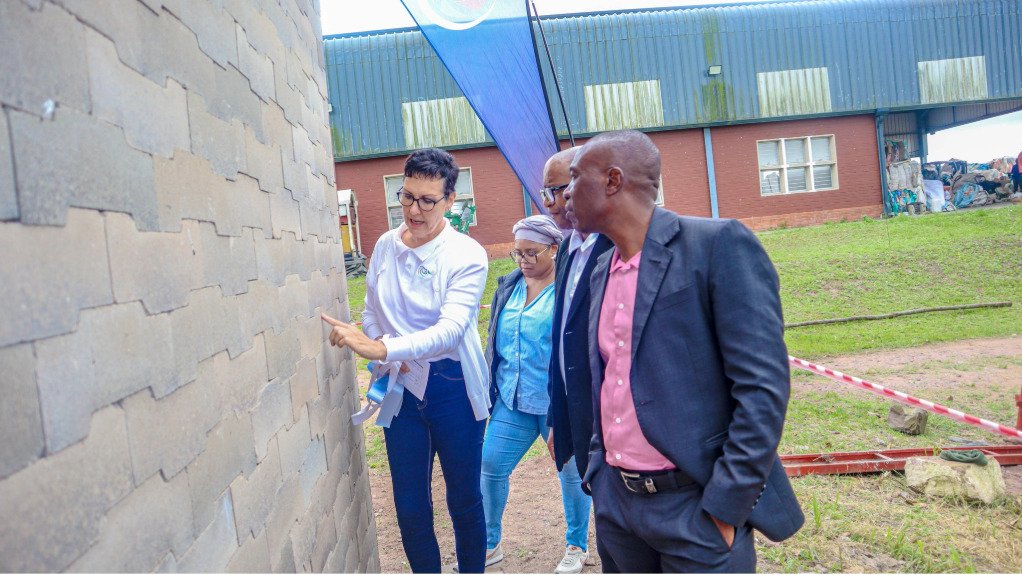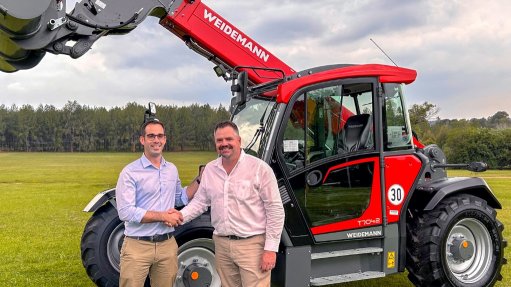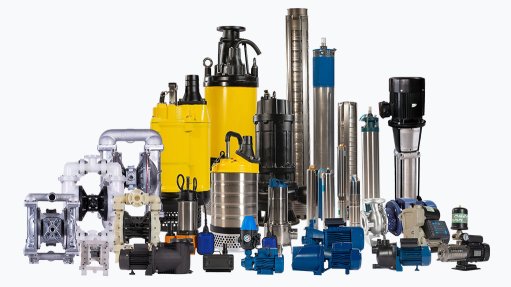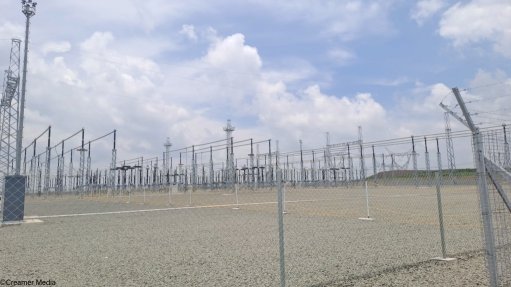Construction waste repurposed into building blocks


INTERNAL HOLLOWS Each block features internal hollows, which when stacked, create channels for installation of electrical and water pipes, reducing the need to cut grooves, ensuring the blocks remain intact
Construction waste is being repurposed into eco-friendly building blocks for low-cost Reconstruction and Development Programme (RDP) housing through a Department of Science, Technology and Innovation (DSTI) initiative.
Last month, research institute the Council for Scientific and Industrial Research (CSIR), in partnership with nonprofit organisation Use-It Waste Beneficiation and building solutions company Key Bricks, unveiled a prototype house built with the blocks.
The site visit provided “behind-the-scenes” insights into Key Bricks’ operations, material mix ratios, structure design and the equipment used to produce the interlocking block.
Use-It and Key Bricks shared their journey on the steps they took in their operations and their close collaboration with the CSIR to test and refine product ideas and adopt circular economy principles.
The green block comprises 70% recycled waste content, including crushed waste glass and construction and demolition waste, making the block itself 100% recyclable.
Additionally, the design of the interlocking block enables “easy” building construction and, if needed, the structure can be deconstructed and reused at another location.
The block is designed to interlock like LEGO blocks, requiring no cement between layers. Each block features internal hollows which, when stacked, create channels for installation of electrical and water pipes, reducing the need to cut grooves and ensuring that the blocks remain intact.
The DSTI Socioeconomic Innovation Partnerships deputy director-general Dr Mmboneni Muofhe and CSIR Hosted Programmes executive manager Bongani Memela presided over the ribbon-cutting ceremony for the newly built demonstration house. CSIR project manager Aubrey Muswema, Use-it MD Belinda Putterill and Key Bricks CEO Matt Oliver also attended.
The CSIR noted that the blocks resulted from the need to find markets for waste glass and building rubble in KwaZulu-Natal (KZN).
“It’s not viable to transport waste glass from KZN to Gauteng for recycling, the margins on this are just too slim, resulting in a lot of this waste remaining uncollected and impacting the environment,” said Putterill. “We need to find ways to use glass locally in KZN.”
Moreover, cities, towns and villages across the country are also plagued with the illegal dumping of building rubble in open spaces. As these blocks use construction and demolition waste, they can help to reduce dumping, in addition to reducing the need for conventional virgin materials.
Muswema explained that building with the innovative block is cost-effective, saves construction time and requires minimal labour and building experience.
Local businesses and value chains can also benefit from the potential to generate additional revenue streams.
Further, the blocks also have the potential to accelerate social relief efforts by addressing the country’s housing backlog.
Article Enquiry
Email Article
Save Article
Feedback
To advertise email advertising@creamermedia.co.za or click here
Comments
Press Office
Announcements
What's On
Subscribe to improve your user experience...
Option 1 (equivalent of R125 a month):
Receive a weekly copy of Creamer Media's Engineering News & Mining Weekly magazine
(print copy for those in South Africa and e-magazine for those outside of South Africa)
Receive daily email newsletters
Access to full search results
Access archive of magazine back copies
Access to Projects in Progress
Access to ONE Research Report of your choice in PDF format
Option 2 (equivalent of R375 a month):
All benefits from Option 1
PLUS
Access to Creamer Media's Research Channel Africa for ALL Research Reports, in PDF format, on various industrial and mining sectors
including Electricity; Water; Energy Transition; Hydrogen; Roads, Rail and Ports; Coal; Gold; Platinum; Battery Metals; etc.
Already a subscriber?
Forgotten your password?
Receive weekly copy of Creamer Media's Engineering News & Mining Weekly magazine (print copy for those in South Africa and e-magazine for those outside of South Africa)
➕
Recieve daily email newsletters
➕
Access to full search results
➕
Access archive of magazine back copies
➕
Access to Projects in Progress
➕
Access to ONE Research Report of your choice in PDF format
RESEARCH CHANNEL AFRICA
R4500 (equivalent of R375 a month)
SUBSCRIBEAll benefits from Option 1
➕
Access to Creamer Media's Research Channel Africa for ALL Research Reports on various industrial and mining sectors, in PDF format, including on:
Electricity
➕
Water
➕
Energy Transition
➕
Hydrogen
➕
Roads, Rail and Ports
➕
Coal
➕
Gold
➕
Platinum
➕
Battery Metals
➕
etc.
Receive all benefits from Option 1 or Option 2 delivered to numerous people at your company
➕
Multiple User names and Passwords for simultaneous log-ins
➕
Intranet integration access to all in your organisation



















